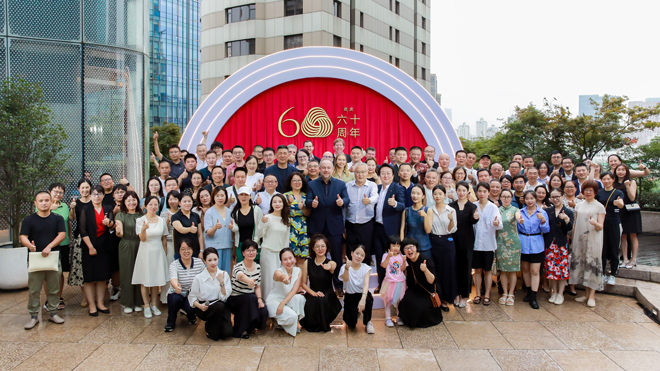Woolmark licensees back our wool in China

Chinese companies certified to use the Woolmark brand and other wool industry partners recently gathered in Shanghai to learn more about the opportunities for Australian wool in the region and thereby increase sales of their wool products.

With about a quarter of Woolmark licensees being Chinese companies, The Woolmark Company in China each year brings together its Woolmark licensees and other partners to attend a one-day Woolmark Licensee Seminar. This year, being the 60th anniversary of the Woolmark brand, the event had special significance.
Held on 26 July, more than 150 guests from the Chinese-Australian wool industry gathered to celebrate the rich legacy of the Woolmark brand and its vision for the future. Attendees included executives from leading enterprises, brands, and e-commerce platforms; government officials; academic experts; and Australian woolgrowers.
The event highlighted the ever-increasing opportunities in wool textile innovation, marketing and sustainable development in China, and provided the opportunity for companies across the supply chain to communicate and cooperate together.
“During the past 60 years, the Woolmark logo has become one of the world’s most renowned textile symbols, representing innovation across the entire supply chain from farm to retail. AWI and The Woolmark Company remain committed to increasing global recognition of wool’s premium, natural qualities,” AWI CEO John Roberts said in his opening remarks to the seminar.
“We’ve also witnessed during this time, the growth of China’s textile industry and the high level of investment that it continues to put into wool. We look forward to further good relations and cooperation between the Australian and Chinese wool industries.”
Minister-Counsellor (Agriculture) at the Australian Embassy Beijing, Deb Langford, said at the seminar: “Australia and China share a long history of collaboration in the wool industry, which has boosted both economies and facilitated cultural exchange. Looking ahead, we hope to deepen our collaboration and forge the path to sustainable development together.”
Woolgrower Tom Murray of Trilby Station at Louth, NSW, gave a presentation in which he shared the experience of wool-growing in Australia and highlighted woolgrowers’ commitment to sustainability.
President of China Wool Textile Association, Liu Jiaqiang, provided an overview of the wool industry in China and its prospects for the future. AWI Country Manager for China, Jeff Ma, outlined the business landscape of The Woolmark Company in China, showcasing the potential of wool in the Chinese market. Some of the insights from other guest speakers who addressed the seminar included:
Opportunities for wool in the apparel industry: Zhan Yan, manager of womenswear at China’s largest e-commerce platform TMALL, said wool product sales on e-commerce platforms have been increasing annually. More brands are expected to launch wool products to meet the demand for high-quality, personalised and sustainable fashion.
Design trends in the business attire market: Dr Cao Xiaojie from Dong Hua University emphasised the crucial role of wool in business attire. She believes that wool clothing will blend style with technological advancements, making business attire more comfortable, versatile, functional, stylish and eco-friendly.
Wool in China's outdoor sports market: Xue Fei, general manager of outdoor sports at wool brand [SN], highlighted the growing demand for high-quality outdoor gear and how wool can increase its market share due to the fibre offering superior comfort and protection.
China is a major market for Australian wool
The China we know today is not the China of 60 years ago, or 30 years ago, or even just 10 years ago. With 1.4 billion people driving a new consumer culture and an economy currently growing at 5% per year, today it seems the only constant in China is change.
But one thing that has endured is the country’s vast appetite and passion for Australian Merino wool and its deeply committed relationship with Australian woolgrowers. Today, China is Australia’s largest customer, buying about 85% of its total wool exports. Exports to China have risen markedly since 1980, from 21 million kilograms (mkg) greasy to 268 mkg in 2022/23.
Over the past few decades, China’s wool textile industry has made remarkable progress and has become the world’s largest wool processing and exporting country. It has made major breakthroughs in scale, technology and innovation.
Once a manufacturing hub, China in recent years has also fast become a large consumer of premium wool apparel. The finished high-end wool garments that were previously only made for export have found a domestic market thanks to the rise of middle income earners and their maturing tastes.
This article appeared in the September 2024 edition of AWI’s Beyond the Bale magazine. Reproduction of the article is encouraged.












